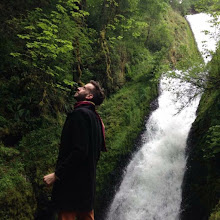Not too long ago, I started Grad School.
Eek. At the request of a few buddies, and considering the fact that
this is also sort of a movies blog, I now present a paper I wrote not too long ago. Notes and citations are near the bottom.

We Don’t Put
Out:
Objectification,
Panopticism, and Collaboration in
Ladies and Gentlemen, The Fabulous Stains (1981)

By the late 1970’s, in an
unexpected but beautifully orchestrated turn of events, certain members of the
punk rock community began to realize that punk had turned into its masturbatory,
self-righteous, self-aggrandizing heavy metal forbearers. Punk now mirrored the commercial, decadent, and
youth-centered music from the 60’s they heavily despised. It was as though they had woken up and
recognized they now embodied the easily critiqued image of the punk rock poseur,
donning an anarchy symbol as a veiled attempt at rebelling against their
inevitable transformation into their parents.
With Crass’ 1978 song “Punk is Dead” ringing in their ears, punk rock
musicians began branching off, forming a variety of new genres, including new
wave, post-punk, and hardcore.
With new wave taking hold primarily
in the inner cities, and post-punk primarily propagating in the UK, hardcore
flourished in the American suburbs, its stripped-down, no-nonsense approach to
music speaking directly to the disenfranchised suburban sensibility. With this veritable rebirth of punk came austere,
socially and politically minded lyrics; the sincere, forthright rage and
intensity with which they sang about battling oppression of any kind being
mirrored by their wild and abrasive, but simple, instrumentalization.
During this transitional period,
Lou Adler, record producer, director of Cheech and Chong’s Up in Smoke (1978), and producer of the cult hit Rocky Horror Picture Show (1975), teamed
up with academy award winning screen writer Nancy Dowd to create the film Ladies and Gentlemen, the Fabulous Stains
(1981). One of the first roles for both
Diane Lane and Laura Dern, Ladies and
Gentlemen, the Fabulous Stains follows the exploits of an all-girl band, Lane’s
character being the oldest at fifteen, as they carve out a space for themselves
both under the ominous, repressive shadow of the burnt out, aging heavy metal
bands, and along side the unwelcoming, already-insular, equally and ironically
oppressive hardcore punk scene. Through an understanding of Laura Mulvey’s
theory of the male gaze, Michel Foucault’s theory of panopticism, and Coleman
and Rippin’s theory on collaboration, a formal analysis of Ladies and Gentlemen, the Fabulous Stains shows that it suggests
that women cannot simply wait
for men to remove the shackles of the patriarchy; that by recognizing,
critiquing, and rejecting established systems of masculinized oppression,
specifically that of objectification, as well as ending the practice of
self-policing on behalf of the patriarchy, women will be able to make
significant strides by collaborating with each other working towards ending
their own subjugation.


